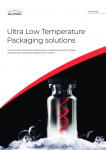Signant Health CEO talks investments and growth opportunities a year after CRF, Bracket merger

CRF Bracket was formed in 2018 following the merger of CRF Health and Bracket. Now, the company becomes Signant Health, providing electronic clinical outcomes assessment (eCOA), electronic consent (eConsent), patient engagement, interactive response technology (IRT), clinical supply management, and endpoint quality as a suite of technology solutions and services.
Initially announced earlier in June, the rebrand will be fully rolled out during the DIA Global Annual Meeting this week.
Mike Nolte, CEO of Signant Health, explained that the original acquisition was driven by the opportunity to create a clinical research business, one focused on the patient journey as a core piece of its strategy. “We saw a good moment in time to reposition and rebrand – the momentum has been building around patient centricity – be that concept a buzzword or in part reality,” he said.
“Bracket alone could not deliver that, specialized as it was on clinical supply chain, IRT, and services around the more complex end of clinical trials, particularly neuroscience. Integrating with CRF Health in 2018 delivered the reporting,” Nolte explained.
But how does a software company focus on the patient?
“We focus around an ideal trial – to organize thinking and look at opportunities with our solutions,” said Nolte. “If we can simplify progress through the journey and think from the patient out – albeit around the margins as a software vendor – over time, we can make an impact that could be significant.”
As part of that journey, Nolte said technology has “enormous untapped potential.”
Looking ahead
Thinking to the future, Nolte spoke to the decentralization of clinical trials – and the use of virtual and hybrid studies. “As a longer-term investment thought process, the emerging trend is for research to migrate away from traditional sites,” he said, still noting that sites will always remain for certain therapeutic areas.
Though, with telemedicine and device connectivity, patients will be able to participate in trials from the comfort of their own homes. “[T]hese are all new opportunities where technology will benefit and simplify how research is conducted. It is a longer-term investment strategy,” Nolte said.
Signant will be “advocates” for the use of technology, he added, but also “mindful to be at the same stage as the market we serve.”
“We don’t foresee a wholesale sea change ahead in how research is conducted,” he said. “It will be very gradual as people get more comfortable with solutions, get supported by regulatory bodies, and change happens quite slowly.”
Nolte explained, “As customer adoption changes along with the regulatory environment, it will position us in an interesting place front end with virtual and hybrid trials, and pragmatically ahead of competitors.”
Investments and growth opportunities
Growth opportunities for the two companies moving forward as one include building momentum around electronic consent (eConsent), rethinking the connection between the patient and the supply chain, and building out a stronger analytics platform, Nolte said.
This includes creating greater “feedback loops” for patients. Specifically, the company sees ways in which it can communicate with patients further “through analytics within clinical data, to improve and further understand the experience, delivering more of a road map for deeper learning.”
Additionally, one of the greatest areas of opportunity, Nolte said, relates to the supply chain vendor “and associating them with patient centricity – understanding how the challenges of clinical supply chain execution can also impact patients,” he explained.
“In other words,” he said, “you cannot afford for a patient not to get a drug, but you also cannot afford to manufacture what patients don’t need.”
Electronic clinical outcome assessment (eCOA) can help to more accurately forecast demand, according to Nolte, explaining that more information can be provided about where a patient is in “the funnel.”
“Customers need greater ability to know what to manufacture when, how to design a trial, when to have high volume distribution channels,” he added.
“The more we can create enhanced visibility for customers to make good investments and decisions and help them measure the experience in the conduct of research, reversing the lens to view this from a patient perspective, the more we see an untapped area to do exciting new things.”














